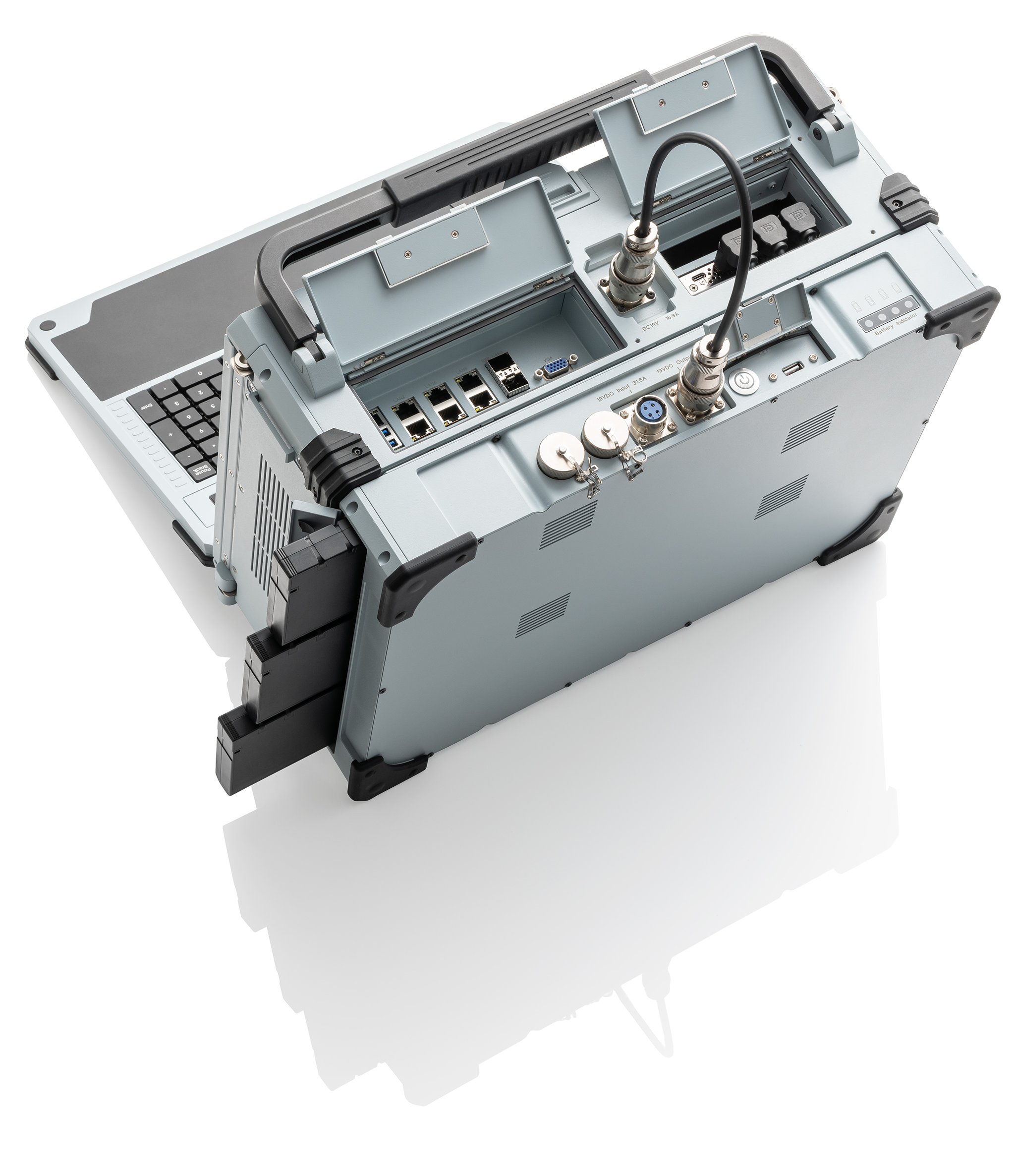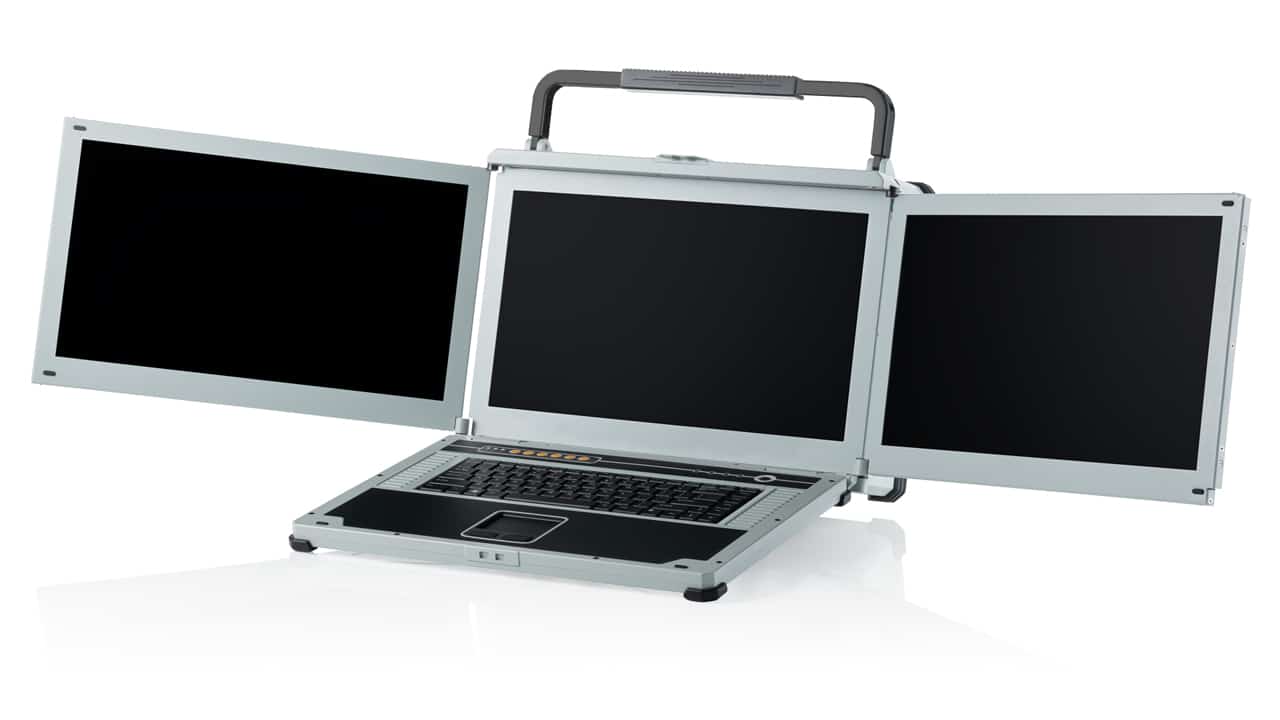Laptop computers with expansion slots Portexa NotePAC-III-PRO-V Triple screen portable server with expansion Getac X500 Single screen portable server with expansion “If you need a portable laptop-style computer with an expansion slot or two, there are not many options…. Common Features Large laptop portables Two PCIe expansion slots Fast processing Lots of connectivity Two alternatives… Continue reading Rugged laptops with expansion slots – X500 and NotePAC
Tag: rugged workstation
Unlimited battery power! NotePAC-III-PRO-V with Power Pack.
Click on image for larger view Announcing the NotePAC-III-PRO-V POWER PAC 4+ hour battery life rugged portable The NotePAC-III-PRO-V is the most powerful computer in it’s class. Triple screen portable computers with 16 core Xeon’s and expansion slots are inherently both powerful and require external power…. Until now! An additional machined aluminum chassis attaches to… Continue reading Unlimited battery power! NotePAC-III-PRO-V with Power Pack.
Deployable Video Processing Laptop
Deployable Video Processing Laptop Rugged triple screen Xeon portable with video capture card NotePAC-III-PRO-V Vertical triple screen portable NotePAC-III-PRO Rugged laptop – triple screen NotePAC-III-SC Rugged laptop – Special configuration Video capture hardware solution Many security and surveillance missions rely on video. They need to monitor, capture, and disseminate video feeds. If a… Continue reading Deployable Video Processing Laptop
PCT Multi-touch screens on portable workstation
MegaPAC L1, L2 & L3 Now with PCT Multi-touch screens Multi-touch portable workstations The latest touch screen technology is now available on large deployable workstation screens. The ACME MegaPAC is now available with Projected Capacitive Touch screens. Single, dual and triple screen workstations are available, and whichever system suits your… Continue reading PCT Multi-touch screens on portable workstation
Quad display portable workstation
MegaPAC-RD-24 Portable Workstation EATX Dual Xeon Portable Power. Multi-display portable workstation Introducing the MegaPAC-RD. The all-new MegaPAC-RD is available with one, two, three or four displays. Displays can be mounted on the left or right, and also on top of the main chassis. In other words, the MegaPAC-RD gives the ultimate in flexibility to arrange… Continue reading Quad display portable workstation
World’s first portable with 120TB removable storage
Featured Video 120TB+ Removable Storage Portable Power Now available with more than 120TB of removable SSD storage, the NetPAC-RHD16 is the most powerful portable server on the planet. Learn More NetPAC-RHD16 The most powerful portable server on the planet Maximum performance portable Most powerful portable: NetPAC-RHD-16 The brief? Make the most powerful portable computer… Continue reading World’s first portable with 120TB removable storage
PCIe Lanes
PCIe Lanes explained An introduction PCI Express, PCIe, or Peripheral Component Interconnect Express, can be a somewhat complicated computer specification. When your computer first boots, PCIe is what determines the devices that are attached or plugged into the motherboard. It identifies the links between each device, creates a traffic map, and negotiates the width of each… Continue reading PCIe Lanes


